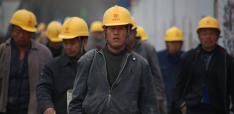Climate Engineering: The need for Science, Governance and Better Understanding
This opinion piece is part of the ‘The Global Governance Futures 2025’ programme which brings together young professionals to look ahead and recommend ways to address global challenges.
As Sustainable Development Goals (SDGs) replace Millennium Development Goals (MDGs) in the post-2015 world, climate change will become more central to the priorities across various groups of stakeholders, funders and governments. After years of gridlock, there actually were two major developments in climate change discussions in 2014. First, in the UN climate talks, which ended in December ‘14 in Lima, where negotiators from 190 countries agreed to a range of decisions that were laid out in a four-page text. Those decisions can be a useful foundation for 2015’s Conference of Parties (COP) in Paris. The second development was marked by the bilateral agreement between the US and China, the two largest carbon emitting countries of the world. Considering the fact that the projected global warming is much higher compared to the historical climate conditions and variability within which human and natural systems have evolved, these developments, though welcome, fall short of effectively countering climate change. If we are serious about countering climate change, then it is high time for increased collaboration between scientists and policy-makers to create a governance structure around the three-pronged approach – Mitigation, Adaptation, Geoengineering (MAG).
Mitigation or reducing emissions of greenhouse gases is the safest and most predictable method of moderating climate change - it is the preferred approach as it avoids climate change all together. Adaptation includes policies designed to plan for and enable countries to adapt their economies to a warmer world, with the rationale that foresight and planning can reduce the burdens of dealing with climate change. This is now considered an unavoidable option because some degree of climate change is inevitable, so adaptation to the new reality, especially in developing countries, is necessary. Geoengineering refers to the intentional, large-scale manipulation of the global environment to counteract the effects of climate change. Currently, geoengineering is neither preferred nor unavoidable, but this may change in the next few years.
While we need more insights into the return expected of each approach before wholesale adoption, agreement on adaptation is relatively less difficult than the other two approaches. There is largely a general agreement on supporting vulnerable populations to climate change, mostly in developing countries. Regarding mitigation and geoengineering, however, such agreement does not yet exist and it is all the more urgent to address the two issues. While scientific experiments and test results can contribute significantly to such findings, our approach should also be determined by social, legal and political issues.
For mitigation, even though the world is moving towards a differentiated responsibility, there is still lot of disagreement. While developed countries have been mainly responsible for creating the stock of greenhouse gases in the atmosphere and also have much higher emissions per capita, developing countries are reducing that gap. We now require emission reductions targets for most countries to create any substantial movement and need an agreement on what constitutes a fair target for each country.
Economics is useful here. A study1 of past emissions targets by Jeffrey Frankel of Harvard University has found that these targets implicitly obey a formula that quantifies three major principles: all countries should rein in their emissions, but rich countries should accept bigger cuts than poor countries; countries where emissions have recently increased rapidly should be given some time to bring them back down; and no country should suffer unreasonably higher economic costs than others in mitigation – the understood logic being higher mitigation targets will incur higher economic costs. To illustrate a little: According to the 1997 Kyoto Protocol every 10% increase in per capita income corresponded to an agreed emissions reduction of 1.4%. In 2010 Climate Change Conference in Cancún every 10% increase in income corresponded to a cut of 1.6%. If this pattern continues, then we are gradually moving from historic levels of emissions to per capita levels. As mitigation negotiations proceed, this approach can allow us to evaluate whether the burden of reducing the harmful effects of climate change is being fairly distributed between developing and developed countries.
This brings us to geoengineering, a field that is not very well understood by policymakers and is therefore considered more controversial than adaptation and mitigation. Admittedly, there are various techniques in geoengineering, broadly grouped into two categories – carbon dioxide removal and solar radiation management, which are considerably different from each other. This adds to the confusion, and therefore geoengineering becomes an area where we need close collaboration between scientists and policy-makers.
There are some signs of favorable movement as policymakers are increasingly interested in science2. While this provides an opportunity for scientists to share their views in policy matters, this has also led policy-makers to attack science when it has supported a different view. To address this, firstly, scientists and policy-makers have to agree that science is not always conclusive. Scientists need to be open about uncertainty in science when talking about policy. Similarly, policy-makers need to understand science better, acknowledging that there is uncertainty in the field and that there can be differences in opinion between scientists themselves. Still, uncertainty and different opinions should not be a reason to postpone creating governance for relatively “less understood” topics, such as geoengineering. Secondly, we need to differentiate clearly between scientific questions and policy questions. While scientists can determine the feasibility and the impact (both positive and negative) from geoengineering, it is primarily the policy makers who need to wade through the moral and ethical issues as well as the details of an effective regulation.
Besides science, there are two issues in geoengineering that policy-makers have to deal with – moral hazard and lock-in. Moral hazard points to the possibility that geoengineering experiments might lead people to assume that it could be feasible, and thus to give up on reducing emissions. Lock-in refers to the creation of a preferred research direction, therefore forming a constituency that would downplay subsequently uncovered risks.
I agree that geoengineering experiments carried out without due respect for legitimate concerns would be damaging. But precedent suggests that such experimentation can be regulated. In the late 2000s such experiments were discussed by the London Convention, which had set a fairly impressive set of regulatory requirements on ocean fertilization, a geoengineering technique. Still, there are serious and complex governance issues which need to be resolved for other geoengineering techniques to even consider those as an acceptable approach to climate change. Progress on this front is only possible if scientists and policy-makers work closely together to address these issues.
Mudit Sharma is a strategy consultant at Dalberg Global Development Advisors and is a fellow of the Global Governance Futures program. The views expressed here are solely those of the author.


